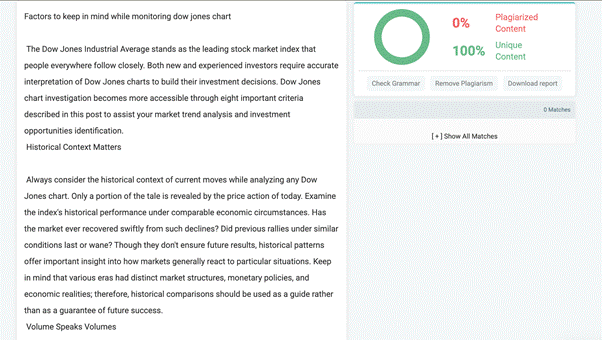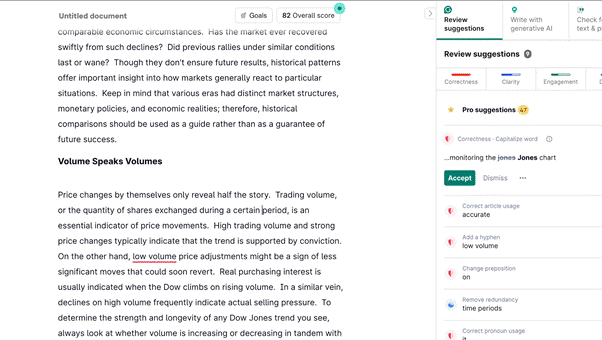For investors looking to comprehend broad market movements in the US, tracking the Standard & Poor’s 500 Index (SP500 chart) is a fundamental activity. 500 of the biggest publicly listed firms are tracked by this significant index, which offers vital information on the direction and health of the market as a whole. However, while examining S&P 500 charts, even seasoned investors commonly make crucial mistakes that might result in less-than-ideal investing choices. This thorough article looks at eight typical blunders that people make while watching S&P 500 charts. By doing so, you may become more disciplined and logical in your approach to market analysis and possibly enhance your investing results by making better decisions.
1. Overreacting to Short-Term Fluctuations
By giving daily or weekly S&P 500 fluctuations too much weight, many investors harm their portfolios and make irrational judgments instead of emotional ones. Rather than reflecting underlying changes in the economy, short-term price activity frequently reflects transient variables like algorithmic trading patterns, short news cycles, or basic market noise. Ordinary volatility can cause worry and lead to needless trading activity if you are always monitoring short-term charts. Higher transaction costs, possible tax repercussions, and lost long-term prospects are usually the outcomes of this. Expert investors are aware that significant market movements typically take months or years to emerge rather than days. To keep a healthy perspective and refrain from making snap judgments based on ephemeral market conditions, think about checking your S&P 500 research once a week or once a month rather than obsessing over hourly charts.
2. Ignoring the Economic Context
Charts by themselves seldom provide the whole picture. Investors who examine SP500 live chart technical patterns without taking into account the underlying economic conditions behind such moves are making a grave analytical mistake. The intricate relationships between interest rates, job data, inflation forecasts, company profitability, and many other economic issues are reflected in index performance. Chart patterns that were dependable in prior market cycles may give false indications during times of economic transformation. Before making any inferences from any chart formation, think about if the state of the economy supports your technical analysis. Does your interpretation match the job situation? Does your chart reading align with interest rate trends? Are present prices justified by corporate earnings? Chart reading becomes a more thorough analytical process when economic context is included, rather than a just mechanical activity.
3. Falling Prey to Confirmation Bias
Human nature compels us to ignore contradicting data in favor of information that confirms our preexisting opinions. This confirmation bias emerges when investors ignore signals pointing to alternate possibilities and only pay attention to signs that support their current market perspective while examining S&P 500 charts. You may minimize divergences or waning momentum while highlighting bullish chart patterns if you think markets will increase. This biased vision causes your analysis to have risky blind spots. By actively looking for data that contradicts your market thesis, you may counteract this tendency. In particular, watch for warning flags in sector rotation patterns or breadth indicators if you’re feeling positive. If you’re bearish, consider if the selling momentum is indeed picking up speed or if it could be running out.
4. Misinterpreting Technical Indicators
Investors misuse technical indicators because they do not understand their applicable range and proper application environment. Investors can utilize common tools to gain important market data although proper understanding of these metrics remains essential. The misconception exists that an RSI reading above the “overbought” threshold should lead directly to market collapse but such indicators stay elevated for extended stretches in strong bull markets. Likewise, in erratic, range-bound markets, moving average crossovers provide a lot of misleading signals. Technical indicators are more effective when used as a component of a larger analytical framework than when used as stand-alone decision-making tools. Understand an indicator’s calculation process, typical behavior in various market regimes, and common false signals in detail before applying it to S&P 500 charts.
5. Neglecting Volume Analysis
Price changes without accompanying volume analysis provide just part of the picture. Many investors ignore this important confirmation aspect in favor of concentrating only on price activity. To confirm their durability, notable S&P 500 movements should preferably be accompanied by suitable volume patterns. Similar to this, capitulation—dramatic selling on exceptionally large volumes, usually followed by reversal patterns—is a common element of market bottoms. It is always important to consider if volume is consistent with the price story when assessing possible market turning points. During significant movements, is trading activity rising or falling? Are possible reversal moments where volume surges are happening? Is declining momentum indicated by decreasing volume? Volume analysis helps differentiate between potentially misleading signals and actual trends by providing important context regarding the conviction driving market moves.
6. Failing to Consider Multiple Timeframes
Analytical blind spots are harmful when S&P 500 charts are analyzed in a single period. Different facets of market activity are shown by each time frame; for example, daily charts may indicate a downturn, while weekly or monthly views demonstrate a core uptrend that is still ongoing. Expert analysts usually look at a minimum of three periods: intermediate time frames to comprehend the current market phase, shorter timeframes for possible entry or exit points, and longer-term charts to determine the main trend direction. By using many timeframes, a hierarchical knowledge of market movements is established. Signals that line up across several time periods typically offer more robust and consistent trading possibilities. On the other hand, contradictory indications across time periods sometimes point to erratic, unpredictable situations that call for caution.
7. Chasing Patterns Without Confirmation
Although identifying patterns is a crucial component of technical analysis, many investors take action on possible patterns before they are properly confirmed. Patience is essential for seeing head-and-shoulders formations, cup-and-handle patterns, or possible double bottoms. Developing or partial patterns often break apart before they are finished, capturing enthusiastic traders who were expecting the textbook result. When using disciplined chart analysis, one must wait for conclusive proof before acting, usually a significant break of support/resistance levels with the right volume. Analytical precision is increased and erroneous signals are decreased using this systematic methodology. Additionally, take into account how neatly a pattern emerges; in general, textbook-perfect formations turn out to be more dependable than unclear or distorted patterns.
8. Overlooking Sector Rotation Dynamics
The weighted average of the S&P 500 index’s constituent sectors is reflected in its value, which may obscure significant internal dynamics. Seeing the index as a single entity without looking at the underlying sector fluctuations is a typical monitoring error. Significant rotation frequently takes place beneath the surface as money moves across industries like technology, finance, healthcare, and utilities, even during times of somewhat flat overall performance. Oftentimes, these rotation patterns offer early warning signs of shifting market circumstances before the wider index does. Significant declines are frequently preceded by deteriorating breadth, which occurs when fewer sectors engage in rallies. On the other hand, expanding involvement across several industries usually signifies more sustainable and healthful advancements.
Conclusion
Investors may create more complex, nuanced interpretations of SP500 chart today by avoiding these eight typical errors. Keep in mind that good chart analysis combines technical concepts with expertise and judgment, representing both science and art. The most prosperous market players regulate their emotions, uphold analytical discipline, and never stop learning new things. They create analytical frameworks that take into account several confirmations since they understand that no one sign or pattern functions flawlessly when used alone. Investors may make better selections based on a more thorough comprehension of market movements if they approach S&P 500 chart research with the proper humility regarding market complexity and awareness of these possible hazards.



